- Home
- Richard Dawkins
The Greatest Show on Earth Page 9
The Greatest Show on Earth Read online
Page 9
The intimate relationship between flowers and their pollinators is a lovely example of what is called co-evolution – evolution together. Co-evolution often occurs between organisms that have something to gain from each other, partnerships in which each side contributes something to the other, and both gain from the cooperation. Another beautiful example is the set of relationships that have grown up around coral reefs, independently in many different parts of the world, between cleaner fish and larger fish. The cleaners belong to several different species, and some are not even fish at all but shrimps – a nice case of convergent evolution. Cleaning, among coral-reef fish, is a well-established way of life, like hunting or grazing or anteating among mammals. Cleaners make their living by picking parasites off the bodies of their larger ‘clients’. That the clients benefit has been elegantly demonstrated by removing all the cleaners from an experimental area of reef, whereupon the health of lots of species of fish declines. I have discussed the cleaning habit elsewhere, so will say no more here.
Co-evolution also occurs between species that don’t benefit from each other’s presence, like predators and prey, or parasites and hosts. These kinds of co-evolution are sometimes called ‘arms races’ and I postpone discussing them to Chapter 12.
NATURE AS THE SELECTING AGENT
Let me draw this chapter, and the previous one, to a conclusion. Selection – in the form of artificial selection by human breeders – can turn a pye-dog into a Pekinese, or a wild cabbage into a cauliflower, in a few centuries. The difference between any two breeds of dog gives us a rough idea of the quantity of evolutionary change that can be achieved in less than a millennium. The next question we should ask is, how many millennia do we have available to us in accounting for the whole history of life? If we imagine the sheer quantity of difference that separates a pye-dog from a peke, which took only a few centuries of evolution, how much longer is the time that separates us from the beginning of evolution or, say, from the beginning of the mammals? Or from the time when fish emerged on to the land? The answer is that life began not just centuries ago but tens of millions of centuries ago. The measured age of our planet is about 4.6 billion years, or about 46 million centuries. The time that has elapsed since the common ancestor of all today’s mammals walked the Earth is about two million centuries. A century seems a pretty long time to us. Can you imagine two million centuries, laid end to end? The time that has elapsed since our fish ancestors crawled out of the water on to the land is about three and a half million centuries: that is to say, about twenty thousand times as long as it took to make all the different – really very different – breeds of dogs from the common ancestor that they all share.
Hold in your head an approximate picture of the quantity of difference between a peke and a pye-dog. We aren’t talking precise measurements here: it would do just as well to think about the difference between any one breed of dog and any other, for that is on average double the amount of change that has been wrought, by artificial selection, from the common ancestor. Bear in mind this order of evolutionary change, and then extrapolate backwards twenty thousand times as far into the past. It becomes rather easy to accept that evolution could accomplish the amount of change that it took to transform a fish into a human.
But all this presupposes that we know the age of the Earth, and of the various landmark points in the fossil record. This is a book about evidence, so I can’t just assert dates but must justify them. How, actually, do we know the age of any particular rock? How do we know the age of a fossil? How do we know the age of the Earth? How, for that matter, do we know the age of the universe? We need clocks, and clocks are the subject of the next chapter.
* As in all members of the daisy family, each ‘flower’ is actually many little flowers (florets), bundled together in the dark disk in the middle. The yellow petals that surround the sunflower are in fact the petals of just the florets around the edge. The florets in the rest of the disk have petals, but too small to be noticed.
† Perhaps because – being a New World plant – the sunflower is not mentioned explicitly in the Bible. The theological mind takes a delight in the niceties of dietary laws and the ingenuity required to dodge them. In South America, capybaras (sort of giant guinea pigs) were deemed to be honorary fish for the purposes of Catholic dietary laws on Fridays, presumably because they live in water. According to the food writer Doris Reynolds, French Catholic gourmets discovered a loophole that enabled them to eat meat on Fridays. Lower a leg of lamb into a well and then ‘fish’ it out. They must think God is awfully easily fooled.
* Oliver Morton discusses this and related issues in his provokingly lyrical book Eating the Sun.
* At least there is no reason to think that they do, or indeed that they enjoy anything in the sense we understand. I shall return to this perennial temptation in Chapter 12.
* Which were in turn named after the ‘multitude of dogs of a huge size’ mentioned in Pliny’s Natural History.
* For example, herding in sheepdogs is derived from stalking in wolves, with the killing removed from the end of the sequence.
* It doesn’t affect the point I am making, but this story applies only to female angler fish. The males are usually tiny dwarfs, who attach themselves parasitically to a female’s body, like a little extra fin.
* The popular canard about Hitler being inspired by Darwin comes partly from the fact that both Hitler and Darwin were impressed by something that everybody has known for centuries: you can breed animals for desired qualities. Hitler aspired to turn this common knowledge to the human species. Darwin didn’t. His inspiration took him in a much more interesting and original direction. Darwin’s great insight was that you don’t need a breeding agent at all: nature – raw survival or differential reproductive success – can play the role of breeder. As for Hitler’s ‘Social Darwinism’ – his belief in a struggle between races – that is actually very un-Darwinian. For Darwin, the struggle for existence was a struggle between individuals within a species, not between species, races or other groups. Don’t be misled by the ill-chosen and unfortunate subtitle of Darwin’s great book: The preservation of favoured races in the struggle for life. It is abundantly clear from the text itself that Darwin didn’t mean races in the sense of ‘A group of people, animals, or plants, connected by common descent or origin’ (Oxford English Dictionary, definition 6.I). Rather, he intended something more like the OED’s definition 6.II: ‘A group or class of people, animals, or things, having some common feature or features’. An example of sense 6. II would be ‘All those individuals (regardless of their geographical race) who have blue eyes’. In the technical jargon of modern genetics, which was not available to Darwin, we would express the sense of ‘race’ in his subtitle as ‘All those individuals who possess a certain allele.’ The misunderstanding of the Darwinian struggle for existence as a struggle between groups of individuals – the so-called ‘group selection’ fallacy – is unfortunately not confined to Hitlerian racism. It constantly resurfaces in amateur misinterpretations of Darwinism, and even among some professional biologists who should know better.
* Psychologists have analogous tests of risk-taking among humans, which show interesting differences. Entrepreneurs typically score highly on risk-taking measures, as do pilots, rock-climbers, motorcycle racers and other extreme sports enthusiasts. Women tend to be more risk-averse than men. Feminists will here point out that the causal arrow could go either way: women could become more risk-averse because of the occupations into which society thrusts them.
CHAPTER 4
SILENCE AND SLOW TIME
IF the history-deniers who doubt the fact of evolution are ignorant of biology, those who think the world began less than ten thousand years ago are worse than ignorant, they are deluded to the point of perversity. They are denying not only the facts of biology but those of physics, geology, cosmology, archaeology, history and chemistry as well. This chapter is about how we know the ages of rocks and the fossils embedd
ed in them. It presents the evidence that the timescale on which life has operated on this planet is measured not in thousands of years but in thousands of millions of years.
Remember, evolutionary scientists are in the position of detectives who come late to the scene of a crime. To pinpoint when things happened, we depend upon traces left by time-dependent processes – clocks, in a broad sense. One of the first things a detective does when investigating a murder is ask a doctor or pathologist to estimate the time of death. Much follows from this information, and in detective fiction an almost mystical reverence is accorded to the pathologist’s estimate. The ‘time of death’ is a baseline fact, an inerrant pivot around which more or less far-fetched speculations by the detective revolve. But that estimate is, of course, subject to error, an error that can be measured and can be quite large. The pathologist uses various time-dependent processes to estimate the time of death: the body cools at a characteristic rate, rigor mortis sets in at a particular time, and so on. These are the rather crude ‘clocks’ available to the investigator of a murder. The clocks available to the evolutionary scientist are potentially much more accurate – in proportion to the timescale involved, of course, not more accurate to the nearest hour! The analogy to a precision clock is more persuasive for a Jurassic rock in the hands of a geologist than it is for a cooling corpse in the hands of a pathologist.
Man-made clocks work on timescales that are very short by evolutionary standards – hours, minutes, seconds – and the time-dependent processes they use are fast: the swinging of a pendulum, the swivelling of a hairspring, the oscillation of a crystal, the burning of a candle, the draining of a water vessel or an hourglass, the rotation of the earth (registered by a sundial). All clocks exploit some process that occurs at a steady and known rate. A pendulum swings at a very constant rate, which depends upon its length but not, at least in theory, on the amplitude of the swing or the mass of the bob on the end. Grandfather clocks work by linking a pendulum to an escapement which advances a toothed wheel, step by step; the rotation is then geared down to the speed of rotation of an hour hand, a minute hand and a second hand. Watches with hairspring wheels work in a similar way. Digital watches exploit an electronic equivalent of a pendulum, the oscillation of certain kinds of crystals when supplied with energy from a battery. Water clocks and candle clocks are much less accurate, but they were useful before the invention of event-counting clocks. They depend not on counting things, as a pendulum clock or a digital watch does, but on measuring some quantity. Sundials are inaccurate ways of telling the time.* But the rotation of the earth, which is the time-dependent process on which they rely, is accurate on the timescale of the slower clock that we call the calendar. This is because on that timescale it is no longer a measuring clock (a sundial measures the continuously varying angle of the sun) but a counting clock (counting day/night cycles).
Both counting clocks and measuring clocks are available to us on the immensely slow timescale of evolution. But to investigate evolution we don’t need just a clock that tells the present time, as a sundial does, or a watch. We need something more like a stopwatch that can be reset. Our evolutionary clock needs to be zeroed at some point, so that we can calculate the elapsed time since a starting point, to give us, for example, the absolute age of some object such as a rock. Radioactive clocks for dating igneous (volcanic) rocks are conveniently zeroed at the moment the rock is formed by the solidification of molten lava.
Fortunately, a variety of zero-able natural clocks is available. This variety is a good thing, because we can use some clocks to check the accuracy of other clocks. Even more fortunately, they sensitively cover an astonishingly wide range of timescales, and we need this too because evolutionary timescales span seven or eight orders of magnitude. It’s worth spelling out what this means. An order of magnitude means something precise. A change of one order of magnitude is one multiplication (or division) by ten. Since we use a decimal system,* the order of magnitude of a number is a count of the number of zeroes, before or after the decimal point. So a range of eight orders of magnitude constitutes a hundred millionfold. The second hand of a watch rotates 60 times as fast as the minute hand and 720 times as fast as the hour hand, so the three hands cover a range which is less than three orders of magnitude. This is tiny compared to the eight orders of magnitude spanned by our repertoire of geological clocks. Radioactive decay clocks are available for short timescales as well, even down to fractions of a second; but for evolutionary purposes, clocks that can measure centuries or perhaps decades are about the fastest we need. This fast end of the spectrum of natural clocks – tree rings and carbon dating – is useful for archaeological purposes, and for dating specimens on the sort of timescale that covers the domestication of the dog or the cabbage. At the other end of the scale, we need natural clocks that can time hundreds of millions, even billions, of years. And, praise be, nature has provided us with just the wide range of clocks that we need. What’s more, their ranges of sensitivity overlap with each other, so we can use them as checks on each other.
TREE RINGS
A tree-ring clock can be used to date a piece of wood, say a beam in a Tudor house, with astonishing accuracy, literally to the nearest year. Here’s how it works. First, as most people know, you can age a newly felled tree by counting rings in its trunk, assuming that the outermost ring represents the present. Rings represent differential growth in different seasons of the year – winter or summer, dry season or wet season – and they are especially pronounced at high latitudes, where there is a strong difference between seasons. Fortunately, you don’t actually have to cut the tree down in order to age it. You can peek at its rings without killing it, by boring into the middle of a tree and extracting a core sample. But just counting rings doesn’t tell you in which century your house beam was alive, or your Viking longship’s mast. If you want to pin down the date of old, long-dead wood you need to be more subtle. Don’t just count rings, look at the pattern of thick and thin rings.
Just as the existence of rings signifies seasonal cycles of rich and poor growth, so some years are better than others, because the weather varies from year to year: there are droughts that retard growth, and bumper years that accelerate it; there are cold years and hot years, even years of freak El Niños or Krakatoa-type catastrophes. Good years, from the tree’s point of view, produce wider rings than bad years. And the pattern of wide and narrow rings in any one region, caused by a particular trademark sequence of good years and bad years, is sufficiently characteristic – a fingerprint that labels the exact years in which the rings were laid down – to be recognizable from tree to tree.
Dendrochronologists measure rings on recent trees, where the exact date of every ring is known by counting backwards from the year in which the tree is known to have been felled. From these measurements, they construct a reference collection of ring patterns, to which you can compare the ring patterns of an archaeological sample of wood whose date you want to know. So you might get the report: ‘This Tudor beam contains a signature sequence of rings that matches a sequence from the reference collection, which is known to have been laid down in the years 1541 to 1547. The house was therefore built after AD 1547.’
All very well, but not many of today’s trees were alive in Tudor times, let alone in the stone age or beyond. There are some trees – bristlecone pines, some giant redwoods – that live for millennia, but most trees used for timber are felled when they are younger than a century or so. How, then, do we build up the reference collection of rings for more ancient times? For times so distant that not even the oldest surviving bristlecone pine goes back that far? I think you’ve already guessed the answer. Overlaps. A strong rope may be 100 yards long, yet no single fibre within it reaches more than a fraction of that total. To use the overlap principle in dendrochronology, you take the reference fingerprint patterns whose date is known from modern trees. Then you identify a fingerprint from the old rings of modern trees and seek the same fingerprint from the
younger rings of long-dead trees. Then you look at the fingerprints from the older rings of those same long-dead trees, and look for the same pattern in the younger rings of even older trees. And so on. You can daisychain your way back, theoretically for millions of years using petrified forests, although in practice dendrochronology is only used on archaeological timescales over some thousands of years. And the amazing thing about dendrochronology is that, theoretically at least, you can be accurate to the nearest year, even in a petrified forest 100 million years old. You could literally say that this ring in a Jurassic fossil tree was laid down exactly 257 years later than this other ring in another Jurassic tree! If only there were enough petrified forests to daisychain your way back continuously from the present, you could say that this tree is not just of late Jurassic age: it was alive in exactly 151,432,657 BC! Unfortunately, we don’t have an unbroken chain, and dendrochronology in practice takes us back only about 11,500 years. It is nevertheless a tantalizing thought that, if only we could find enough petrified forests, we could date to the nearest year over a timespan of hundreds of millions of years.

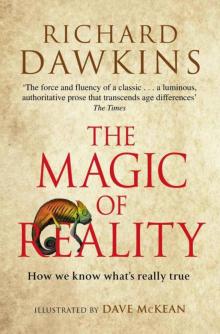 The Magic of Reality
The Magic of Reality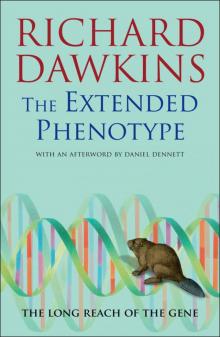 The Extended Phenotype
The Extended Phenotype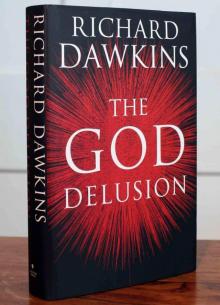 The God Delusion
The God Delusion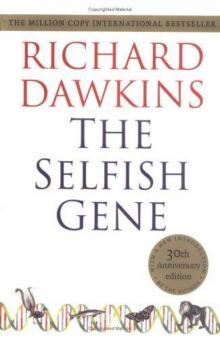 The Selfish Gene
The Selfish Gene The Blind Watchmaker
The Blind Watchmaker The Greatest Show on Earth
The Greatest Show on Earth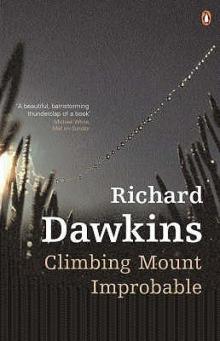 Climbing Mount Improbable
Climbing Mount Improbable Outgrowing God
Outgrowing God Brief Candle in the Dark
Brief Candle in the Dark The Greatest Show on Earth: The Evidence for Evolution
The Greatest Show on Earth: The Evidence for Evolution Science in the Soul
Science in the Soul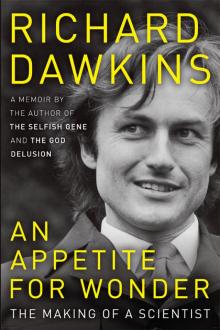 An Appetite for Wonder
An Appetite for Wonder